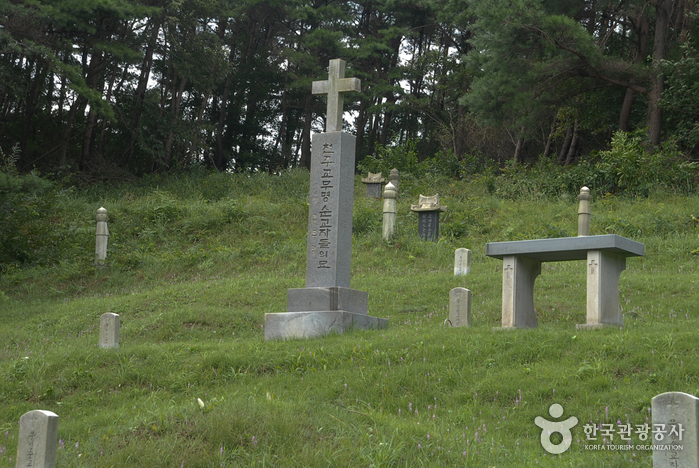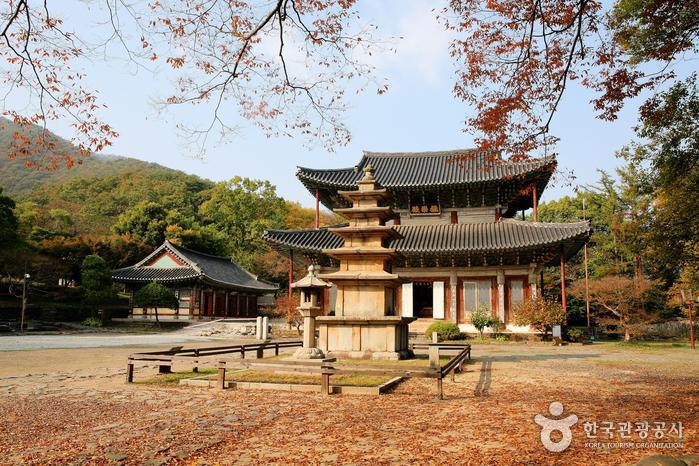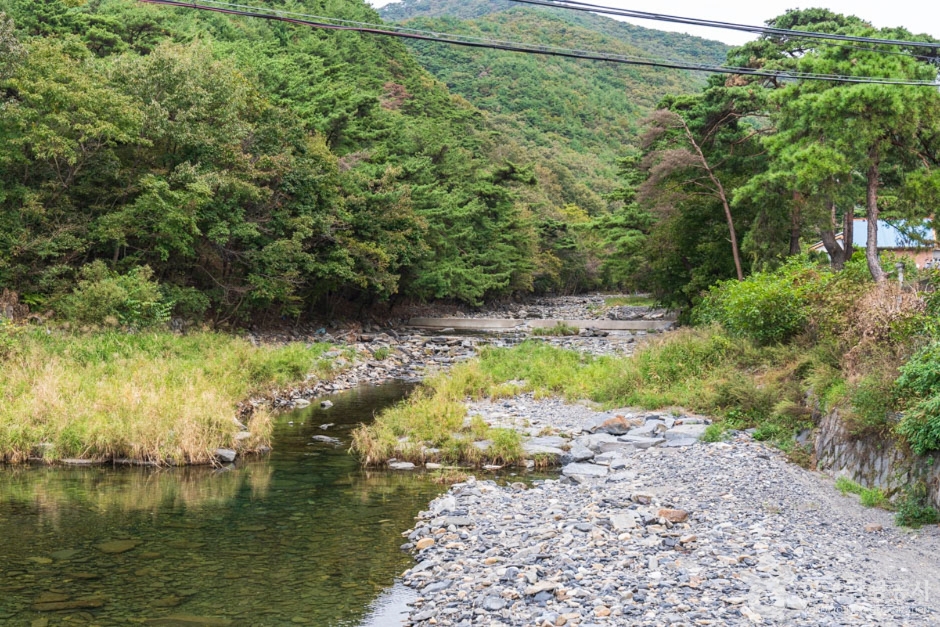Buyeo Seodong Lotus Festival (부여서동연꽃축제)
14.7Km 2022-05-04
52, Gungnam-ro, Buyeo-gun, Chungcheongnam-do
• 1330 Travel Hotline: +82-2-1330 (Korean, English, Japanese, Chinese) • For more info: +82-41-830-2208
Buyeo Seodong Lotus Festival has been designated as an excellent festival four years in a row by the Ministry of Culture, Sports and Tourism. The festival takes place every July during the summer's peak when the lotus flowers bloom. The festival is based on a historical love story, with programs and performance events focused on story delivery. The festival venue is designed to fit in with the natural settings nearby, serving as a perfect backdrop for taking memorable photos with families and friends.
Buyeo Naseong Fortress [UNESCO World Heritage] (부여 나성 [유네스코 세계문화유산])
16.5Km 2021-07-22
100-11, Dongmun-ro142beon-gil, Buyeo-gun, Chungcheongnam-do
+82-41-830-2623
Buyeo Naseong, also known as the Outer City Wall, was built to protect the capital of Baekje, Sabi. It has a x_height of about 8.4 kilometers. The wall surrouned Busosanseong Fortress and extended to the city of Buyeo.
The wall is one of the oldest walls along with Naseong in Pyeongyang and it is estimated to have been built around 538, when the Baekje capital was changed from Woonjin (current Gongju) to Sabi (current Buyeo). The wall of the fortress starts from the site where Dongmun (East gate) was located to the area of Geumgang River, made by piling soil up. However, only a few traces remain of its former glory.
For now, it leaves a blurry trail including a 20 meter area to the east of Cheongsanseong Fortress, Dongmun Bridge from Seokmok-ri, and an area from Pilseobong Peak to Yeomchang-ri. While the outer wall is sharply sloped, the inner wall was built with a gentle slope to make it easier for horses to reach the guard posts on the top of the wall. Inside the fortress, the palace of Baekje, government offices, houses, temples, stores and protected facilities can be seen. The entire structure of Naseong Fortress features Geumgang River in the south and west sides, providing a natural double-defense system. The wall was one of the important outer defense facilities along with Cheongsanseong and Cheongmasanseong Fortresses.
* Area: 554,591 ㎡
Cheongyang Daracgol Julmudeom Holy Site (청양 다락골 줄무덤 성지)
17.7Km 2020-06-25
78-6, Darakgol-gil, Cheongyang-gun, Chungcheongnam-do
+82-41-943-8123
Julmudeom refers to the unmarked graves of anonymous Catholic martyrs in Darakgol, Cheongyang in Chungcheongnam-do. Darakgol is also the birthplace of St. Choi Gyeong-hwan and Choi Yang-eop (the second Catholic priest in Korea) was also martyred in Gwacheon, Gyeonggi-do. Because the grave is of more than one individual, it was given the name Julmudeom (group graveyard).
Although the exact number of martyrs and their exact cause of death is unknown, they were buried by family resulting in the 37 mounds in three sections. In 1982, Cheongyang Cathedral established monuments to commemorate the unidentified martyrs, and Julmudeom became a well-known site for Catholic pilgrimages. In 1986, the remains of St. Choi Gyeong-hwan Francisco were relocated to the Jeoldusan Martyrs’ Shrine reducing the total number of mounds at Julmudeom to 36.
Boryeong Eunhaeng (Ginkgo) Village (보령 은행마을)
18.8Km 2015-01-20
150-65, Oseosan-gil, Cheongna-myeon, Boryeong-si, Chungcheongnam-do
+82-70-7845-5060
In Boryeong-si, Chungcheongnam-do, Boryeong Eunhaeng (Ginkgo) Village is filled with ginkgo trees. It is also called “Cheongna Eunghaeng Maeul” (청라 은행 마을) and “Green Rural Tourism Village” (녹색농촌체험마을).
Upon entering the village, murals can be seen, which are enhanced by ginkgo trees throughout the village, particularly in autumn when they change a dazzling yellow.
The village uses Janghyeon Elementary School, which closed in 1991, as a market place and local experience venue. Permanent hands-on programs and seasonal countryside activities, making a mosaic with ginkgo leaves, and shaking and gathering ginkgo leaves are also available.
Boryeong Spring Cool Tunnel & Rest Area (보령 냉풍욕장)
19.2Km 2024-02-21
190 Naengpungyokjang-gil, Cheongna-myeon, Boryeong-si, Chungcheongnam-do
Boryeong Spring Cool Tunnel & Rest Area is located on the slopes of Seongjusan Mountain in Boryeong-si, originally an abandoned mine that extended underground for hundreds of meters. Even in the summer when temperatures soar above 30°C, the cool breeze here maintains around 12°C, making it cooler when the outside temperature is high. Dishes made from button mushrooms cultivated using the abandoned mine are also available for dining.
Buyeo Muryangsa Temple (무량사(부여))
19.3Km 2021-11-12
203, Muryang-ro, Buyeo-gun, Chungcheongnam-do
+82-41-836-5066
Muryangsa Temple, located at the foot of Mansusan Mountain in Buyeo-gun, Chungcheongnam-do, is said to have been built during the reign of Silla King Munmu by national preceptor Beomil. Geungnakjeon Hall can be seen after passing through Sacheonwangmun Gate, recognizably the best location for taking in the beauty of Muryangsa Temple. The temple grounds hold the Two-story Geungnakjeon Hall, Five-story Stone Pagoda, and Stone Lantern, all in a row.
The temple is also famous for being the place where Kim Siseup, one of the Saengyuksin (Six Loyal Subjects of the Joseon dynasty), spent his last few days before death. Visitors can see his portrait inside the temple. Although the temple site is included in Buyeo-gun’s administrative district, it is located closer to downtown Boryeong.
Oseosan National Recreational Forest (국립 오서산자연휴양림)
19.7Km 2022-07-22
531, Oseosan-gil, Boryeong-si, Chungcheongnam-do
+82-41-936-5465
Oseosan National Recreational Forest was opened on September 22, 2001 around Myeongdaegyegok Valley in Boryeong-si, Chungcheongnam-do. The area is separated from the city area, making it perfect for peaceful retreats into nature. There is a training center and many walking paths through the forest. The trail leading to the summit of Oseosan Mountain is popular among families and couples for its view of the sunset.
Simyeondonggyegok Valley (Seongjugyegok Valley) (심연동계곡(성주계곡))
19.8Km 2024-02-21
Seongju-ri, Seongju-myeon, Boryeong-si, Chungcheongnam-do
Simyeondonggyegok Valley is a valley formed in an S-shape to the south of Seongjusan Mountain. The name "Simyeon" means deep pond. The landscape is picturesque, and visitors can enjoy forest bathing along the trail lined with pine trees. Even in the summer, the cool flowing water makes it an ideal destination for relaxation.

![Buyeo Naseong Fortress [UNESCO World Heritage] (부여 나성 [유네스코 세계문화유산])](http://tong.visitkorea.or.kr/cms/resource/71/2725771_image2_1.jpg)




 English
English
 한국어
한국어 日本語
日本語 中文(简体)
中文(简体) Deutsch
Deutsch Français
Français Español
Español Русский
Русский